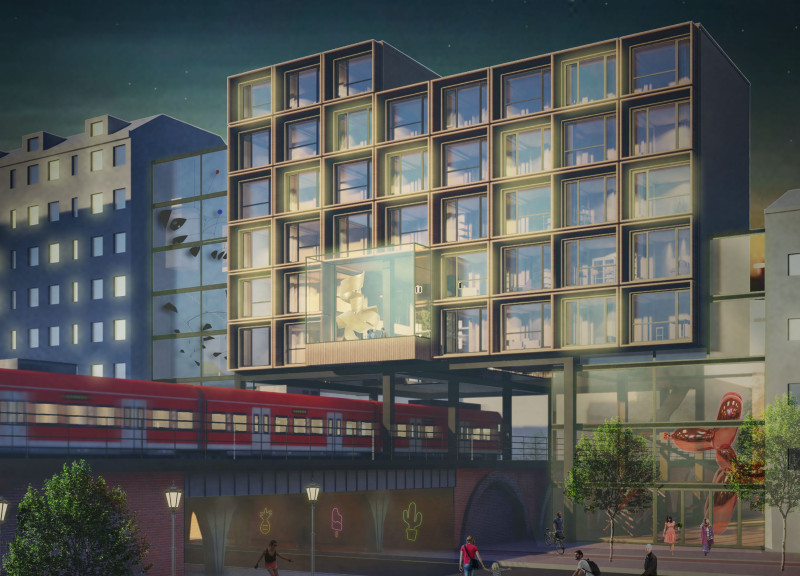5 key facts about this project
Midnight Train to Berlin addresses the housing shortage prevalent in Berlin by using the land above and next to the rail infrastructure. The aim is to create at least 20,000 new homes within the historical city center, incorporating urban density while maintaining the efficiency of the existing transportation systems. The design focuses on modular construction, which allows for flexibility and quick adaptation to the demands of urban housing.
Design Concept
The core idea is to embrace a modular architecture that relies on wooden structures. This method supports a fast construction process and responsiveness to various urban conditions. By focusing on modularity, the design provides a systematic approach to urban sprawl and makes efficient use of limited space in a heavily populated area.
Urban Infilling
The project plans to intervene in superblocks, locations often divided by railway infrastructure. These areas are seen as opportunities for infill development. The intent is to fill these gaps with new residential buildings, revitalizing the neighborhoods and reuniting parts of the city that have become disconnected over time. This infill not only improves the quality of the urban environment but also enhances the overall cohesion of the city.
Public and Private Spaces
The design includes public spaces alongside residential areas. These spaces are not just walkways; they are communal areas and places for art installation that encourage social interaction. The arrangement is designed to enhance community engagement while providing functional and inviting environments for residents to enjoy on a daily basis. This focus creates a sense of belonging and encourages positive interactions among the community members.
Activation of Facades
Another key aspect is the transformation of previously blank facades into engaging surfaces. By reactivating these facades, the design aims to create lively urban spaces that contribute to the neighborhood's visual character. The goal is to turn what were once overlooked areas into vibrant parts of daily life, improving the overall urban experience.
Careful attention to public and private interactions shapes the design, encouraging engagement in both shared spaces and individual living areas, all while fitting within the infrastructure of Berlin.



















































